Origin PC Evo15-S Gaming Laptop: Core i7, GTX 1070 Max-Q, 1080p144
by Joe Shields on April 3, 2018 4:00 PM EST- Posted in
- Laptops
- Systems
- Gaming
- Origin PC
- GTX 1070
- Core 8th Gen
- Max-Q
- Coffee Lake-H
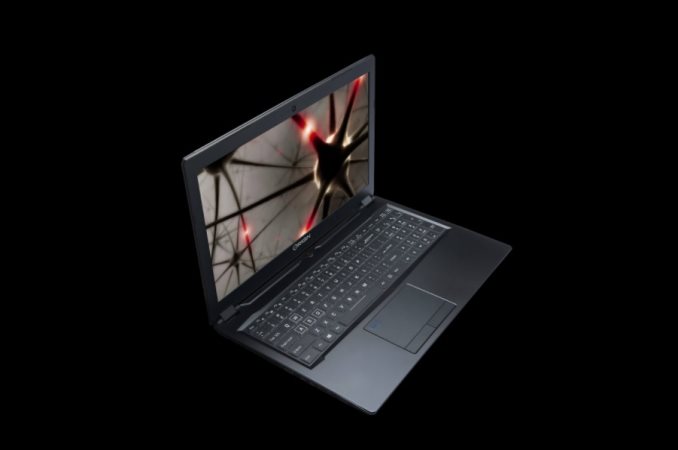
Today Origin PC released its new Evo15-S gaming laptop. The new device uses NVIDIA’s Max-Q based video cards to give a notably thinner and lighter device than the average gaming laptop while maintaining most of the performance. The Evo15-S offers up to an 8th Gen Intel Core i7 processor, a Geforce GTX 1070 (Max-Q) discrete video card, FHD or 4K UHD panel options, and up to 32GB of memory. Measuring in at just 0.7-inches thich, it is as compact as the Asus ROG Zephyrus but is rated to have a longer battery life, and more storage, making for an interesting option in the gaming laptop segment.
Looking at the design aesthetic, one may find it difficult to guess there is some pretty good hardware hiding inside. In fact about the only thing that may tip people off this is a gaming laptop is the large exhausts vents on the rear, and intake on the side. Apart from that, we do not see RGB LEDs on the chassis or anything that would tip off the Evo15-S’s hand. When opening up the top, there is a little bling in the form of an RGB LED backlit keyboard with three lighting zones. If you are the type of user that would like more flare, Origin PC has you covered with several design options including metallic paints (Red, White, Eternal Pink, Sabot Grey, Atmos Blue, and more), hydro dipping, and HD UV printing. They also offer custom laser etching.
Design aside, the real deal is on the inside with the move to the latest Coffee-Lake H-series CPU as well as the Max-Q video card. To that end, the Evo15-S offers users a choice of two CPUs: a quad-core 7th Gen Intel Core i7-7700HQ, or the latest 8th Gen Intel Core i7-8750H hex-core CPU. Video card options are the NVIDIA Geforce GTX 1060 6GB GDDR5 or the GTX 1070 8GB GDDR5 Max-Q. The Max-Q cards are a bit slower than their full-fledged counterparts as they are downclocked with lowered boost ranges to manage TDPs, but they allow for slimmer devices. Either card will make for a solid gaming experience at 1080p resolutions but will lose steam when using 4K UHD resolution for gaming. For displays, there will be four options to choose from: 3 FHD options (IPS 60 Hz, 120 Hz, 144 Hz) and one 4K UHD, all with a matte finish.
Other hardware includes DDR4-2400 or DDR4-2600 memory, with capacity options ranging from 8GB up to 32GB capacity, all in a dual channel configuration. Storage options on the Evo15-S include a single HDD option (2 TB 5400RPM), or SATA SSDs, or PCIe NVMe based drives, or three hybrid drives offering users a lot of choices.
On the network and connectivity side of things, there is an onboard Gigabit Ethernet port as well as different wireless cards depending on the CPU chosen. With the Core i7-7700HQ, users will have an Intel 8265 Dual Band 802.11ac + Bluetooth 4.2 combo with speeds up to 867 Mbps. The i7-8750H gives users access to the latest Intel 9560 CNVi based 802.11ac Wave 2 Wi-Fi.and can reach speeds of 1.73 Mbps. The options are exclusive to the respective CPU used, as the Intel 9560 uses the Wi-Fi MAC integrated into the chipset.
Despite the thin frame, there are a ton of ports on the Evo15-S. The left side includes HDMI, two Mini-DisplayPorts, two USB-C ports, and two USB 3.0 ports. The right side adds another USB 3.0 port, Ethernet jack, headphone and microphone jacks, as well as an SD card slot to round out connectivity.
| Origin PC Evo15-S Gaming Laptop | ||
| Warranty Period | 1 Year Warranty | |
| Product Page | LINK | |
| Processors | Intel Core i7-7700HQ Quad-core (2.8 GHs base - 3.8 GHz Turbo) Intel Core i7-8750H Hex-Core (2.2 GHz base - 4.1 GHz Turbo) |
|
| Memory | 8 GB - 32 GB DDR4-2400 16 GB - 32 GB DDR4-2400 (G.Skill Ripjaws) 16 GB - 32 GB DDR4-2666 (G.Skill Ripjaws) |
|
| Network Connectivity | Gigabit Ethernet Intel 8265 802.11ac + BT 4.2 (867 Mbps), i7-7700HQ Only Intel 9560 802.11ac + BT 5.0 (1.73 Gbps), i7-8750H Only |
|
| Storage | SSD | SATA - 120 GB to 1 TB (M.2) PCIe - 256 GB to 1 TB (M.2) SATA - 120 GB to 4 TB (2.5") |
| HDD | Hybrid - 500 GB to 2 TB Mechanical - 2 TB 5400RPM |
|
| Graphics | NVIDIA GeForce GTX 1060 6GB GDDR5 NVIDIA GeForce GTX 1070 8GB GDDR5 Max-Q |
|
| Expansion Slots | 1 x SD card reader | |
| Display | 15" FHD (1920x1080) IPS Matte display (94% sRGB) 15" FHD (1920x1080) 120 Hz Matte display 15" FHD (1920x1080) 144 Hz Matte display 15" 4K UHD (3840x2160) IPS Matte display (94% sRGB) |
|
| Ports and Connectors | 1 x HMDI 2 x Mini-DisplayPorts 2 x USB-C ports (3.1?) 3 x USB 3.0 1 x Ethernet 1 x Headphone jack 1 x Microphone jack |
|
| Input Device | 3-Zone RGB backlit Membrane Keyboard | |
| Camera | Built-in 2.0M FHD | |
| Power | 330W External AC Power adapter, 94.24Wh Battery, Li-Po |
|
| Audio | Integrated HD Audio Sound BlasterX Pro-Gaming Creative Sound Blaster X-Fi Surround 5.1 Pro USB Creative Sound Blaster Omni Surround 5.1 USB Creative Sound Blaster E3 Headphone Ampligier |
|
| Dimensions | 14.9" x 9.9" x 0.7" | |
| Weight | 4.3 lbs+ | |
| Price ($US) | ~$1600+ | |
Related Reading:
- Dell's Spring Range: New 9th Gen Alienware, Laptops, and Monitors
- Xiaomi Announces 15.6-inch Mi Gaming Laptop: Mid-Specs with Aggressive Pricing
- Best Laptops Q1 2018
- Matebook X Pro (2018): Huawei's Flagship Laptop Upgrade
- VAIO S Laptops Updated With 8th Gen Core CPUs & TruePerformance to Prolong Turbo Time
- HP Announces Updated Elitebook 800 G5 series and ZBook 14U/15U Laptops
Source: Origin PC


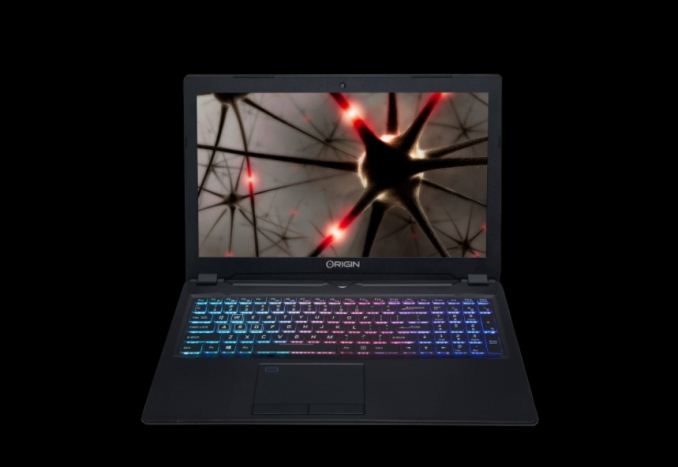
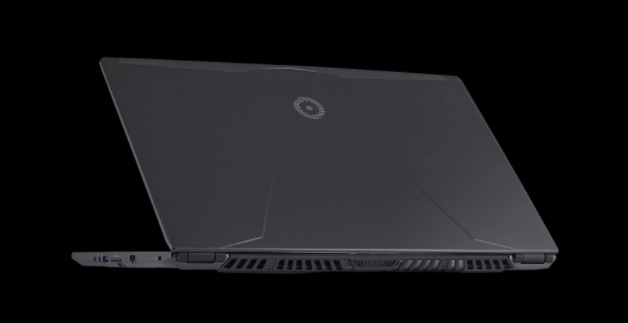
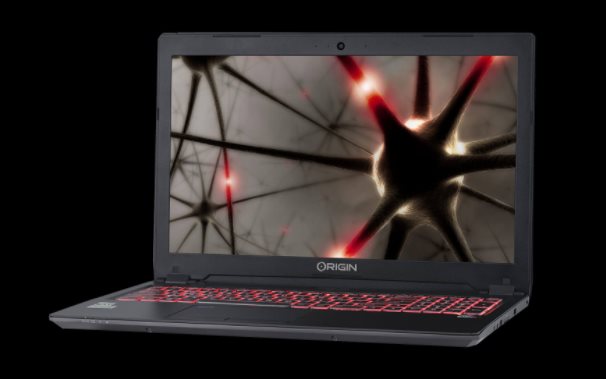
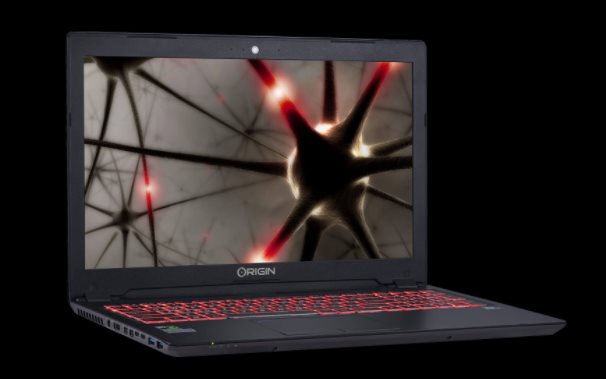










13 Comments
View All Comments
p1esk - Tuesday, April 3, 2018 - link
The bezels... just wow.shabby - Tuesday, April 3, 2018 - link
This isn't a smartphone.boeush - Tuesday, April 3, 2018 - link
And the reasoning that applies to smartphones doesn't apply to laptops, because... uh... ???Spunjji - Wednesday, April 4, 2018 - link
Remind us again why it applies to smartphones well past the point of absurdity we're currently reaching...BurntMyBacon - Wednesday, April 4, 2018 - link
Most laptops aren't meant to be used one handed, for one. Large bezels on smartphones mean you need to sacrifice usable display area in an already size constrained device, or hinder the use of the device by making it significantly larger than it needs to be for the same functionality. This can mean the difference between a device that is usable with one hand and one that isn'tWhile I don't like massive bezels, smartphone bezels have reached the point of diminishing returns and there is little value is pushing for smaller. With laptops, where the display is less size constrained, I'd argue that thermal constraints, antenna placement, structural integrity, ease of screen replacement, finger hold for opening/closing the clam shell without touching the display, adding just a little elevation to the display so that I'm not obscuring the bottom of the screen with my hands while typing, etc. are more important that having the smallest possible bezel.
On the other hand, there are many unnecessarily wide bezels to be found in laptops as well, so I don't fully disagree with the OP statement (it's an opinion), just the idea that the same reasoning that applies to smartphones should apply to laptops.
boeush - Wednesday, April 4, 2018 - link
Gimme a break...Antenna placement?!? If a bezel-less smartphone can cram not just the WiFi but also a 4G antenna (not to mention Bluetooth) into a relatively tiny rectangle, then surely a far larger, thicker laptop with a hinge and 4 effective mounting surfaces could accomplish half as much?
Laptop displays are not size-constrained?!? Have you ever tried using a laptop display to, oh I don't know, browse the Web? Or edit a document, maybe?
The other rationalizations you attempt to make are just more after-the-fact straw-grasping.
The only real underlying reason for this ongoing crap-fest with laptop displays, is that consumers are willing to get rolled and not raising an eyebrow about it. Yet, if the likes of DELL's XPS 15 are any indication, at least some consumers are starting to demand more - and at least some ODMs are beginning to figure out how to do better...
Spunjji - Tuesday, April 10, 2018 - link
You're really revved up about what is effectively an opinion, and at that a poorly sourced one. Yes, antenna placement is relevant in a laptop. They have a lot more mass to block signal with so you can't just stick them anywhere on the chassis. Check a few reviews for examples.Resilience is one of the bigger issues. A laptop has more mass and is less likely to be in a case 24/7 so it needs to handle drops with an order of magnitude more energetic force.
Then there's webcam placement... ugh. So sure, some consumers want more. Some are getting it. But while that option adds cost, reduces studiness of the device and reduces the manufacturer's choice of available panels, we're still going to see this. Maybe calm down a little.
PeachNCream - Tuesday, April 3, 2018 - link
It's trendy to complain about them now.WorldWithoutMadness - Tuesday, April 3, 2018 - link
Hahaha, we really need a mature google glass/vr like display. People wont complain anymore about bezel.SirPerro - Wednesday, April 4, 2018 - link
The bezels are necessary because the combination of factors:- They need the size of the laptop base for themal reasons
- They can only source displays available in the market
So if they couldn't find screens matching their thermal design they had to choose between reducing the thermal headroom to reduce the overall size of the laptop to reduce the bezels.
IMHO it would be cool to have that particular laptop as-is but with an "infinity edge" 17" display, but that may very well be impossible with current available parts.